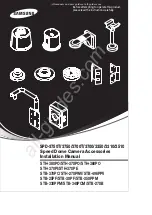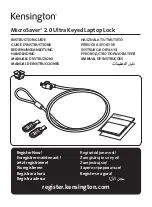
Energizer Homepower HP-
6
Series
Energizer Homepower HP-
6
Series
© Energizer
2021
V23-00211
V23-00211
© Energizer
2021
30
31
• Acute Toxicity: no specific data exists for this product. Batteries are contained in a hermetically
sealed metal case that contain several chemicals, which may be hazardous upon release. Exposure
unlikely to occur with normal operation, however in such a case contents may be harmful.
• Carcinogenicity:
ID
CAS No.
Component
IARC
NTP
1
15365-14-7
Phosphoric Acid, Iron (2+), Lithium Salt
Not Listed
Not Listed
2
7429-90-5
Aluminium
Not Listed
Not Listed
3
7782-42-5
Graphite
Not Listed
Not Listed
4
7440-50-8
Copper
Not Listed
Not Listed
5
9002-88-4
Polyethylene
Category 3
Not Listed
6
21324-40-3
Phosphate (1-), Hexafluoro-, Lithium
Not Listed
Not Listed
ID
CAS No.
Component
Fish
Crustaceans
Algae
1
7429-90-5
Aluminium
LC50: 1.55 mg/L (96h)
(Fish)
No information
available
No information
available
2
7440-50-8
Copper
LC50: 0.665 mg/L (96h)
(Fish)
EC50: 0.02 mg/L (48h)
ErC50: 7.9 mg/L
(96h)
12. Ecological Information
• Acute Aquatic Toxicity
• Persistence and Degradability - no information available.
• Bio accumulative Potential - no information available.
• Mobility in Soil - no information available.
• Results of PBT and VPvB Assessment - phosphoric acid, iron (2+), lithium salt, aluminium, graphite,
copper, polyethylene and phosphate (1-), hexafluoro-, do not meet the criteria for PBT and VPvB
assessment as per regulation (EC) No. 1907/2006, annex XIII.
When promptly and safely used or disposed, the battery does not present any environmental hazard. While
disposing, please ensure that it is disposed in accordance with local and federal regulations.
11. Toxicological Information
Under normal conditions, any contact with a fully sealed, protected battery is non-toxic. If the battery is opened,
the exposure to internal contents such as corrosive fumes can cause irritation to skin, eyes, and mucous
membranes. Inhalation, skin contact, and eye contact must be avoided when possible.
13. Disposal Considerations
14. Transport information
UN Number: UN3480
UN Proper Shipping Name: LITHIUM ION BATTERIES (including Lithium
Ion polymer batteries)
Transport Hazard Class: Class 9
Packing Group Number: packing group II (As per GHS Regulations)
Environmental Hazards (Transport): follow all applicable local, state, and
federal requirements when identifying additional environmental hazards.
Transporting Label:
Classified as a Dangerous Good by the criteria of the ADG Code.
Waste Chemicals - if batteries are still fully (or partially) charged or discharged, they can be considered a
reactive hazardous waste. The batteries must be disposed in accordance with local and federal laws and
regulations, through licensed waste carriers and/or suitable recycling facilities etc.
Product Enclosure – the enclosure or protective case may still present a chemical hazard when empty. The
batteries must be disposed in accordance with local and federal laws and regulations, through licensed
waste carriers and/or suitable recycling facilities etc.
UN3480







































